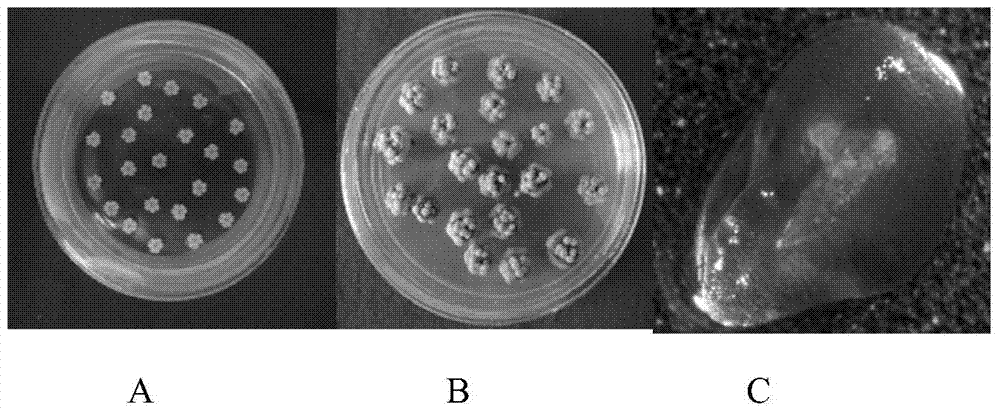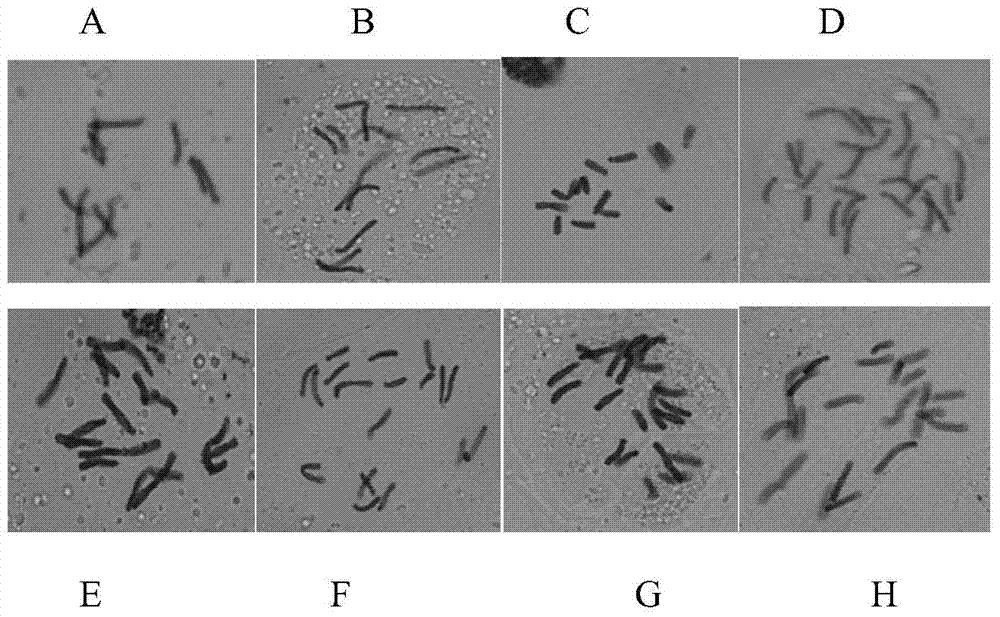Isolated culture method of unfertilized ovary of lilium
An in vitro culture, unfertilized technology, applied in horticultural methods, botanical equipment and methods, horticulture, etc., can solve problems such as low haploid frequency, lack of good genotypes with good traits, and inconsistent flower bud lengths. Effects of regeneration and avoidance of callus pathways
- Summary
- Abstract
- Description
- Claims
- Application Information
AI Technical Summary
Benefits of technology
Problems solved by technology
Method used
Image
Examples
Embodiment 1
[0036] The flower buds of embodiment 1 different periods, different genotypes, the in vitro culture contrast of different culture medium:
[0037] Lily unfertilized ovary culture method in vitro, comprises the following steps:
[0038] (1) Select flower buds, place them in a sterile bottle under aseptic conditions, first sterilize the surface with 75% alcohol for 30 seconds, then sterilize with 10% NaClO for 10 minutes, and then rinse with sterile water 3 times, 3 minutes each time;
[0039] (2) In the ultra-clean workbench, peel off the sterile flower buds to take out the ovary, and cut the ovary into slices with a thickness of 1-2 mm;
[0040] (3) Inoculate ovary slices in Erlenmeyer flasks or petri dishes containing different induction media, and culture them under the conditions of 1600lx light, 14h / 10h (day / night) and (25±1)°C for 20-25d , to induce embryo formation within the ovule;
[0041] (4) The number of ovules containing embryos (embryogenic ovules) was counted
Embodiment 2
[0052] The character of each culture stage of embodiment 2
[0053] (1) Take flower buds (about 10 cm) 1 day before flowering in the greenhouse, put them in a sterile bottle under sterile conditions, first sterilize the surface with 75% alcohol for 30 seconds, then sterilize with 10% NaClO for 10 minutes, and then use Rinse with sterile water 3 times, 3 minutes each time;
[0054] (2) Peel off the sterilized flower buds, take out the ovary, cut it transversely into slices with a thickness of 1-2 mm with a scalpel, and place the slices horizontally on the induction medium for induction culture ( figure 1 Middle A), the induction medium is: BDS+2,4-D2 mg / L+6-BA2 mg / L+sucrose 100g.L -1 + agar 6g.L -1 , pH6.0. The culture conditions are: light 1600lx, 14h / 10h (day / night), (25±1)°C. Cultivate for 20-25 days.
[0055] (3) After 20-25 days of induction culture, the ovules expanded, and the sliced ovaries also expanded ( figure 1 Middle B), the embryo inside the enlarged
PUM
| Property | Measurement | Unit |
|---|---|---|
| Thickness | aaaaa | aaaaa |
Abstract
Description
Claims
Application Information
 Login to view more
Login to view more - R&D Engineer
- R&D Manager
- IP Professional
- Industry Leading Data Capabilities
- Powerful AI technology
- Patent DNA Extraction
Browse by: Latest US Patents, China's latest patents, Technical Efficacy Thesaurus, Application Domain, Technology Topic.
© 2024 PatSnap. All rights reserved.Legal|Privacy policy|Modern Slavery Act Transparency Statement|Sitemap



